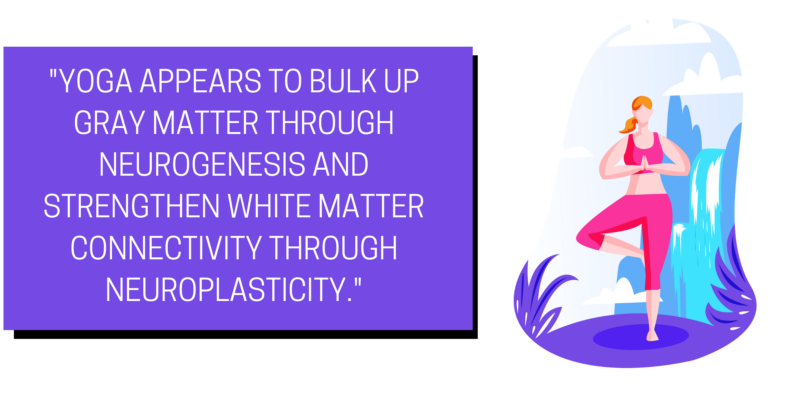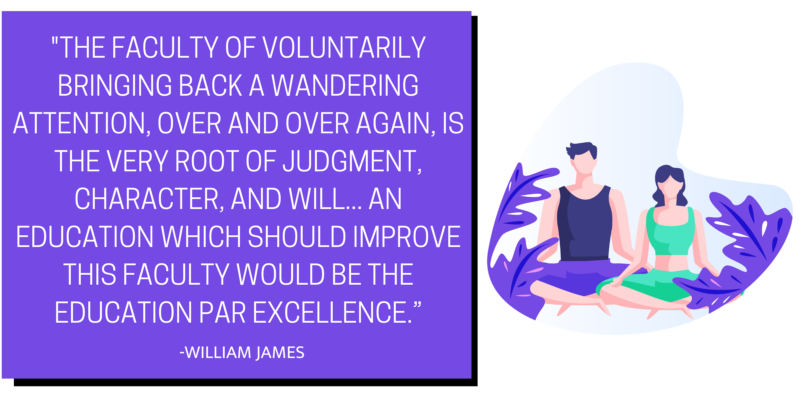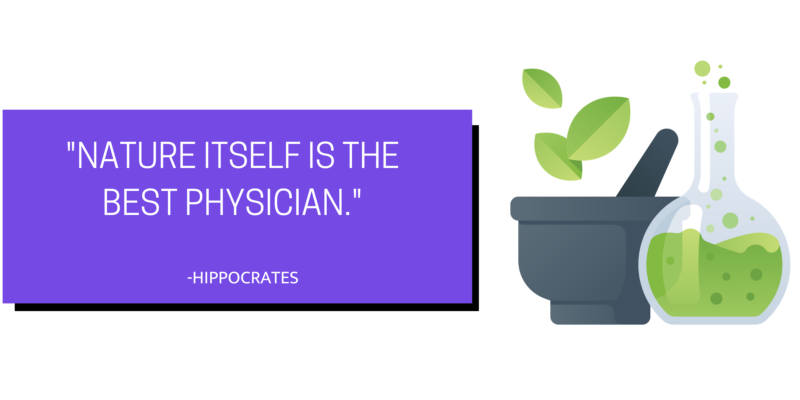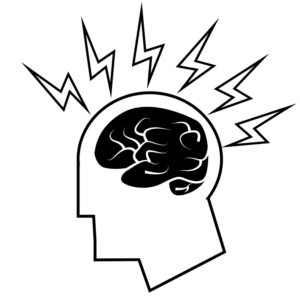Right now in the United States there appears to be just one type of medication prescribed for pain management- an opiate. If you are reading this then chances are you have encountered the many pitfalls of opiates. Just in case we’ll list off a few issues with managing pain using an opiate.
- Opiates don’t last
- Opiates are highly addictive
- Opiates don’t take pain away they just mask it
Let’s unpack that last point a little bit more: opiates don’t take the pain away they just mask it. Not many people really understand how opiates work. Opiates flood the brain turning into a huge distraction away from the pain (and almost anything else). It’s not long before the effects of the opiate wear off and the pain experience returns. Where an opiate was once effective at distracting from the pain it no longer is which is why if the individual is in pain for more than a week that individual will start asking for a more frequent or stronger dose. Opiates work okay for a short recovery period but are not a long-term solution for chronic pain.
Basically, we need more options for pain management and quickly. The good news is that there are a ton of fantastic ways to manage pain without pharmaceuticals. In this article, we are going to discuss all of the non-pharmacological options for pain management.
The three ways to manage pain without meds are:
- With the Body
- With the Mind
- With the Help of Nature
Managing Pain With Your Own Body

It may seem counterintuitive if your body is actually in pain to think that you can manage pain with your own body. But you can. What many people don’t realize or simply haven’t been told is that movement is one of the best things for pain relief. Our body has an incredible system that creates its own natural “morphine” called endorphins. It’s how modern medicine makers came up with the name for morphine. When you run even for a duration of 15 minutes at 75% of your peak heart rate you are likely to experience a “runner’s high.” This experience creates endorphins and reduces the experience of pain across the body.
It’s not necessary to create a runner’s high to reduce pain, however. There are a ton of physical exercises far more gentle than running that will help you release tension and manage pain. Let’s Take a Look!
Range of Motion Exercises
These are great if you have arthritis or other forms of chronic stiffness around your body. Choose an area of your body where you feel pain or limited range of motion. If you experience pain in your arms choose your arms. Then pick a range of motion that feels stiff and limited and gently push that range of motion slowly and gradually over time. You may find that after 30 seconds of holding a stretch you’re able to push that range of motion. You may find that it takes 30 days. Your body will let you know when it’s time to push and better to hold. Here are a couple of range of motion exercises for common ailments.
- Arms over Your Head
- Touch Your Toes
- Roll Your Shoulders
- Head Left and Right
- Roll Your Wrists
- Supine Twist Left and Right
- Bend Your Palms
- Palms Touching Behind Your Back
- Stand on Your Toes
Aerobic Exercise
Aerobic exercise is an essential part of overall well being and health. Aerobic exercise not only helps you to lose weight and maintain healthy body weight but will improve your cardiovascular health and help to combat depression. Choose walking, swimming, and cycling if you are looking for something that is low impact. Aim to exercise for 30 minutes a day.
Strength Training
Long gone are the days where strength training is only for bodybuilders at the gym. Strength training is literally for everyone and all ages. There’s no age or gender that does not benefit from regular strength training. If you experience pain it is essential that you do not skip out on your strength training. Over time you will build lean muscle mass that supports your joints and bones. Additionally, as you speed up your metabolism your body begins to lose more fat which leads to lower levels of inflammation and other metabolic disruption that also causes inflammation and pain.
Tai Chi
According to Harvard Medical School, Tai Chi has incredible benefits for pain relief. Tai Chi is proven effective in lowering back, neck, and shoulder pain as well as pain from arthritis and fibromyalgia. If that weren’t enough Tai Chi enhances your cognition, strengthens your heart, improves your mood, and banishes stress.
Yoga
If you are looking to release overall body tension and improve your mood then you are likely going to love yoga. Yoga minimizes the pain that stems from the lower back, hips, legs and upper body. Yoga also alleviates stress, relaxes the body and mind and improves strength and stamina. It appears as though everyone benefits from adopting a regular yoga routine.
Don’t forget about the benefits that all exercise has for your mood. If you exercise regularly you are more likely to experience an elevated mood, feel more confident in both your appearance and your ability to take on difficult tasks and be overall more resilient to life’s slings and arrows. When you feel accomplished every day you are less likely to ruminate on the pain experience and more likely to feel confident that you can overcome. People who spend less time ruminating on the negative aspects of the experience tend to recover more quickly.
Managing Pain With Your Mind

William James wrote this before the current trends in positive psychology. He didn’t know that contemplative traditions would fulfill this or that this practice would become one of the three important pillars for health (sound mind, sound body, connection with nature). Thank goodness for the work of neuroscientist Richard Davidson and others like him who have discovered that not only does meditation improve attention but also the circuitry of the brain that tells us that things are going well and that life is good. This includes pain. Our experience of pain is entirely subjective primarily because our brains are completely unique. You could fracture your leg in the exact same spot as your neighbor and your pain experience is going to be different. There will be some overlap but ultimately a positive mindset and belief in yourself and your ability to recover are going to help you get out of that cast and walking around on your own quicker than without a positive mindset.
Even just 10 minutes a day of mindfulness exercises may reduce pain.There are a number of mental exercises you can do every day that will help you to relax your mind and rewire your brain to get past the pain. Let’s take a look.
- Breathing Exercises
- Attention Exercises
- Compassion Meditation
- Graded Motor Imagery
Breathing Exercises
Our breath is powerful but because breathing is automatic we don’t tend to think about it. However, what happens physiologically when we start to pay attention to our breath is no short of life-changing. Paying attention to our breathing relaxes our body, changes our heart rate and serves as an important anchor for our attention. You can even sync up your breath with a heart rate monitor to train yourself to become more resilient in times of stress. So, the next time you are feeling overwhelmed with pain try one of these breathing exercises:
Left nostril breathing You guessed it, hold down your right nostril and breath through you left for one minute. Studies show you’ll be able to flip into parasympathetic and start repairing and recovering from acute symptoms more quickly.
4,7,8 breathing This technique promotes relaxation and sleep. You simply breathe in for a count of 4 hold your breath for a count of 7 and exhale for 8. You can repeat this circuit for 1-3 minutes.
Breath Counting Every breath cycle counts as one breath. On the exhale count the breath as “one” then inhale and exhale again count the breath as two. Do it one more time for “three” then repeat the process. Use a 1-3 count and then increase over time to 1-5.
Using the breath as an anchor The breath is a convenient tool because it’s always with us. Use your breath as the “anchor” to listen to. When you notice your attention has gone somewhere else bring it back to your breath. Remember not to judge yourself or get upset when your attention wanders, it will do that. It’s just important to notice it and bring it back to the breath.
Attention Exercises
Attention exercises are more important than ever. We now understand that our brains are plastic and changing whether we control it or not. It turns out that “a wandering mind is an unhappy mind” and that getting our minds to focus on and attend to what is happening around us has benefits for well being that include better focus, greater insight with ourselves, greater connection with others, and a connection with our own greater purpose.
Pay attention to what you see Look at the world around you. Are you commuting to work, walking in the woods, or simply doing a household chore like the dishes? This is a great opportunity to draw your attention to what you see. What colors do you notice? What about textures? Is there interesting lighting? Are there interesting shadows? Take 10 minutes to focus your attention on the way your world looks. Remember that when you catch your mind wandering not to worry. Simply bring it back and continue your practice.
Pay Attention to what you hear Listening is a fantastic way to anchor your attention. There are layers of sound happening around us all the time. Some of the sounds may be natural while others could be man-made. Your airconditioning may have multiple pitches or tones it is emitting just like traffic has distinct sounds. Even a quiet space is not totally quiet. Set your intentions on the sounds around you. Take 10 or 15 minutes to continuously draw your attention to sound. You may even notice that your body begins to relax and you aren’t worrying about your pain or other concerns you may have had at that moment.
Compassion Meditation
Feeling the world’s pain and wishing others well it turns out are two different things. One is empathy and the other is defined as compassion. It is important to distinguish the two as one has shown to be a focus on self (empathy) while the other is the focus on others (compassion).
Compassion Mantra Wish your loved one freedom from pain. Create a mantra e.g., “May your life be free from suffering.” and repeat it for 10 minutes with the other individual in mind.
Imagine Pain Leaving Someone’s Body You may want to choose yourself for this one as an act of self-compassion or you may want to choose someone else. As you breathe in imagine the pain leaving the body. As you breathe out imagine sending the pain away so that it dissolves. Do this for 10 minutes.
Over time as you get better at compassion meditation you can pick people who are not as close to you in your inner circle. You may want to choose a difficult co-worker or even a stranger. After a few months, you may even find yourself ready to send compassion to a person who causes you grief.
Graded Motor Imagery
Graded Motor Imagery (GMI) focuses more on the mind and body connection. The goal of this form of brain training is to reduce pain and improve your performance and speed up rehabilitation. There are three stages of GMI:
- Left/Right Discrimination
- Imagined Movements
- Mirror Therapy
Left/Right Discrimination simply refers to our brains ability to identify a side of the body. When we are in pain we are less likely to register this. You can train your brain to tune in by simply looking at images and practicing over time.
Imagined Movements Imagining a movement has a powerful impact on the brain. Pianists get a ton of benefits from just imagining they are playing the piano. And athletes reap the same rewards. Take time to imagine your movements and you can improve the rehabilitation of your body.
Mirror therapy is just as it sounds. Use a mirror and you can trick your brain into believing that the opposite body part is the one that is active. For a comprehensive list of GMI images, check out the Recognise apps.
Managing Pain With the Help of Nature

Natural remedies have been around us for as long as humans have walked the Earth. There are thousands of year old traditional medicinal pathways still in use today. Modern medicine evolved partially thanks to necessity and partially thanks to some clever marketing. Not all pharmaceuticals are bad and there is certainly a time and a place for using a processed chemical to aid in your recovery. That being said, many natural alternatives rival these chemicals and more often than not provide long-lasting relief and are much safer for your body.
If you know your body well you’ll know when something is perpetually wrong and simply not fixable with a pill. Hopefully, thus far you have come to at least acknowledge the mind-body connection. If so, then you are ⅔ of the way to seeing exponentially improved health. The final ⅓ is arguably the most important, and that is the connection with nature.
As we mentioned above, natural remedies have been around us for as long as humans have existed. Indigenous cultures develop entire stories around the introduction of plant medicine to the world and many places on earth still use plant medicine as their primary healing tools. Many plants are natural pain killers (analgesics) and are easy to grow and very safe for your body.
You likely already know that opium which has been processed to create some powerful pain relief comes from the sap of the poppy flower. But you may not know that the poppy is not the only plant that functions as a natural analgesic. Here’s a list of some fantastic plants that also provide relief from pain:
- Cayenne
- Ginger
- Turmeric
- Devil’s claw
- White willow, meadowsweet, birch
- Solomon’s seal
- Chinese corydalis
- Valerian
- Passionflower
- Wild lettuce
- California poppy
- Skullcap
- Kava kava
- Hydrangea
- Yucca
- Boswellia (frankincense)
- Black pepper
- Cat’s claw
- Feverfew
Both modern medicine and herbal medicine agree that pain is very individualized. To say that one of the above plants is the perfect remedy for you would be a lie. Each person is unique and each plant works in unique ways. Which is another fundamental flaw with using opiates to “cure pain.” Opiate poppy works differently on different people. No one remedy is right for all people.
Still, let’s take a look at how a few of these amazing natural plants take action in the body.
Cayenne- Cayenne is indicated when pain begins with movement. This warming spice may be just the trick if you have been sitting for a period of time and need to warm up a joint or joints. You can easily make your own topical application by infusing cayenne into a bit of carrier oil.
Willow- Willow contains salicin which is the compound used to make aspirin and may be helpful for headaches, gout, muscle aches, and arthritis. Specifically choose willow if you experience pain in the lower back (lumbar and sacral regions).
California Poppy- California Poppy is useful as a sedative and is indicated for when you’re tossing and turning unable to settle your body because you’re in pain. For this reason, people in pain with insomnia may want to try California Poppy.
Solomon’s Seal- Solomon’s Seal makes an excellent liniment and when used topically and regularly has even been shown to become a guard against surgery. Solomon’s Seal takes action on the body’s connective tissue so in the case of grinding pain in the joint or a repetitive strain use Solomon’s seal.
Devil’s Claw- Devil’s Claw has a similar function to NSAIDS but is far more safe for your GI tract than those OTC pain relievers. You could use Devil’s Claw for PMS, Migraines, and general menstrual pain
Wild Lettuce- Wild Lettuce is a sedative as the milky latex is the medicinal part of this amazing analgesic. Wild Lettuce is indicated for when movement makes the pain worse particularly in the muscles and the joints. It is indicated also for one-sided hip pain.
Hydrangea- If you have some oakleaf hydrangeas in your yard you may love them for their aesthetic appeal and stunning compound inflorescence or you may want to dig them up, cut up their root and dry it out for when you have serious inflammation in the bowels, pains from multiple sclerosis, and even rheumatoid arthritis. Take for two weeks then give your body a break.
Yucca- similarly to hydrangea, yucca root may be used for a period of two weeks to relieve IBD as well as applied topically for aches, strains, and joint pain. You can also use yucca internally for headaches and arthritis.
Turmeric- Turmeric is getting a lot of press lately for the compound curcumin. Turmeric may be used in a higher dose instead of opiates after minor surgery. Turmeric functions as a COX-2 inhibitor and may be taken internally or applied topically. Combine with black pepper or cayenne to improve absorption.
Chinese Corydalis- Chinese Corydalis reduced pain is useful for nerve pain, headaches, back pain and menstrual pain. Chinese corydalis is especially useful for all types of chronic pain. Chinese Corydalis actually blocks the pain signal to the brain and works through the dopamine receptor sites, not the opioid receptor sites.
As you can see, there are several options for pain relief found right in nature. We also think it is worth notating that reconnecting with nature by taking a walk in the woods, heading to the beach or taking your dog for a walk are all fantastic ways to reconnect with nature. The more you are in nature the more likely you are to return. Green medicine is definitely the future and your body, as well as the planet, are going to thank you for looking into these non-phamacalogical pain management techniques and remedies.

